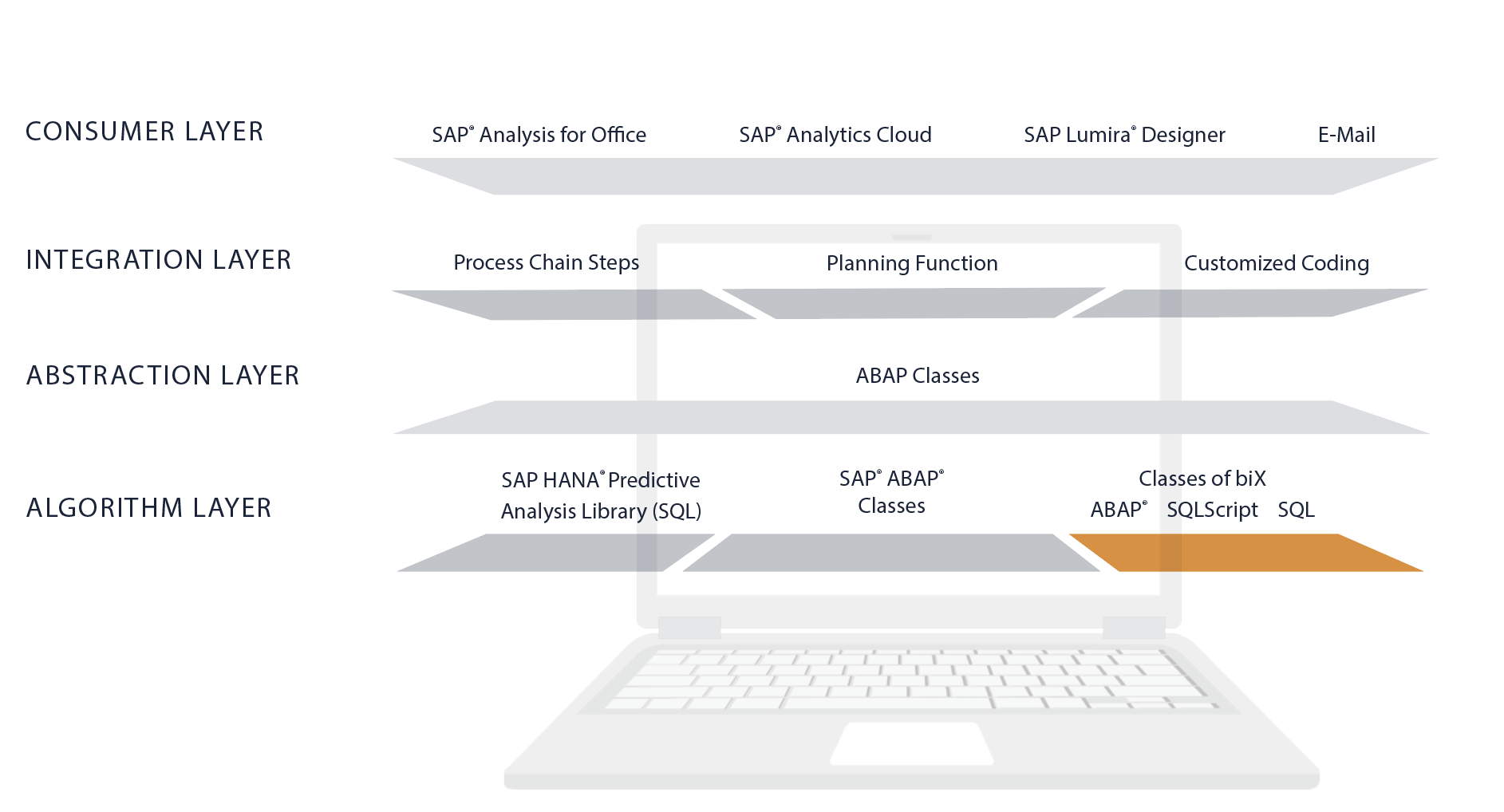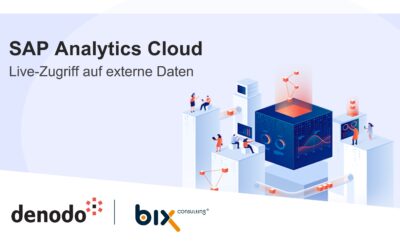Smart Data
In order to direct the mass of data in a modern company into the right channels and make it usable in the company, the classic means of data warehousing are often no longer sufficient. In particular, the three V's (Variety, Volume and Velocity) make it technically almost impossible to transfer all data into a structured data repository. Therefore, it is necessary to find new ways for this data to make its information content usable, to gain new insights and thus to transform big data into smart data.
Next Generation Analytics Use Cases
In the context of our projects, we are repeatedly confronted with complex and complicated problems that go far beyond classical analytics topics. By solving these problems, we rely on technologies such as artificial intelligence and machine learning to achieve the best results for our customers and create real surplus value. In the following, you will find some of our already successfully executed use cases.
Automated management reporting
Automated reporting recognises anomalies and trends at an early stage and points to effects in the business development
Extension of an existing business warehouse
Reduction of the monitoring effort through customer-specific extensions of the existing business warehouse
Avoidance of out-of-stock situations
Development of an AI model based on Machine Learning for early identification of customer needs to avoid OOS-situations
Reduce customer churn
Development of a model to integrate internal and external data to forecast customer churn in a time-sensitive approach
Optimization of master data quality
Training of a neural network for significant improvement and sustainability of master data quality without additional manual effort
Prediction of payment failures
Predicting payment defaults by developing a customer payment profile to reduce the risk of payment defaults
Optimizing of configuration
Development of a neural network to identify similar configuration features in order to plan manufacturing costs in a cost-optimal way
SAP Analytics Cloud - Live access to external data
Development of a central access point for internal and external data using the Denodo infrastructure
biX AI Tools
The biX AI Tools are a collection of tools that enable you to quickly start your advanced analytics project. With our customized toolset, you can set up completely native SAP technology as well as realize non-SAP use cases together with us and later make them permanently usable in regular operation.
The components of the biX AI tools include predictive content and analytical content as well as process models for the successful preparation and implementation of AI and ML projects.
Benefit from our experience in already successfully implemented projects. In addition to the right project setup and the required data sources with sufficient data quality, we focus on the visualization of the results in order to bring trust and transparency to the relationships found.
biX AI Tools
Predictive Content
- Forecasting
- Customer Churn
Analytical Content
- Market Basket Analysis
- Recommendation Systems
- Exception Reporting
- AI Master Data Optimisation
AI Visualisation
- Decision Trees
- Geo Data
- Networks
- UI5
- SAP SAC
- Tableau
- MS Power BI
AI Readiness
- ETL for AI Applications
- Common Data Sources for AI Applications
Management
AI Projects
- Project Setup
- Scoping
- Expectation Management
- CRISP-DM
- RISK Mitigation
Predictive Content
A new opportunity - for your data
Without additional investment and without the usual high administrative effort, the data available in SAP BW (from version 7.3) and in HANA can be used for forecasting, basket analyses or exception reporting. Predictive Content is a framework that can be adapted to changing system environments at any time and expanded to include new areas of analysis.
The intuitive machine learning component ensures fast implementation times and easy adaptation of the algorithms to new parameters. The insights gained can be visualized with standard tools such as MS Excel, SAP Analytics Cloud, SAP Lumira Designer, SAP Analysis for Office, Tableau, or other solutions.1 Data located outside SAP BW (for example in Oracle databases) can also be included in the analysis at runtime using SAP Data Hub. For this purpose, the Predictive Content provides a set of highly efficient Python components.

enables the extraction of new insights from data treasures in SAP BW and a digitalization of business models in your company.

complements the framework and has already fully developed and implemented three application modules.
Forecasting
Predictive content enables a reliable prediction of events, conditions or developments in the future and can be used in many scenarios - for example:
- Production planning
- Simulation scenarios
- Maintenance cases
- Medicine
- Speech recognition
- Customer loyalty
Object group analysis
Predictive Content is used to analyze interrelationships of objects and events, for example in the following use cases:
- Common configuration patterns (e.g. cars)
- Shopping basket analyses
- Portfolio analyses
- Failure-prone parts in machine groups
- Purchase recommendations (up-/cross-selling)
Exception Reporting
Predictive content acts as an early warning system to immediately detect and counteract possible variations from action norms or states. Through machine learning, the solution adapts to new circumstances and changes and can thus be trained and gradually perfected. Possible areas of application are:
- Customer churn (churn prediction)
- Credit risks
- System failures and downtimes
Concentration on the essentials
A key feature of predictive content is the compactness of the solution and the associated holistic support of the process from simple data access to SAP BW and the data models implemented there to an intuitive data console where data and algorithms can be easily selected and parameterized. Data models that have already been used or trained can be imported into predictive content and processed there in a simple process. If required, further data sources can be connected at runtime via the optional SAP Data Hub.
Access to the SAP HANA Predictive Analysis Library and other classes (ABAP, SQL Script, SQL) is transparent and can be carried out by experienced business users. No complex native HANA development is required. Predictive Content explores the data for the user and thus makes it unnecessary to work exploratively with the data. The user can focus more on the exploitation and benefit of the insights gained through automation.


Architecture

Contact









